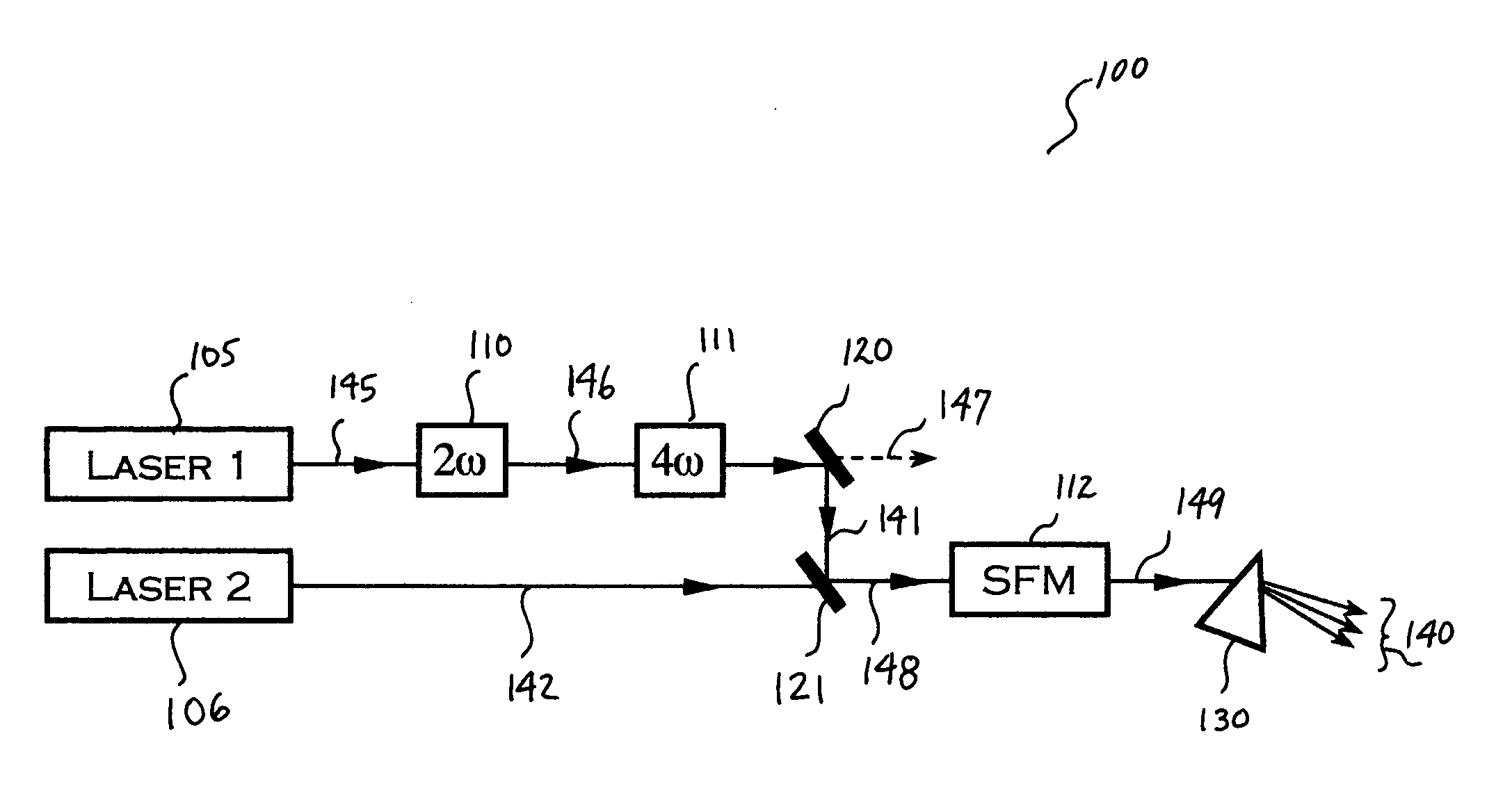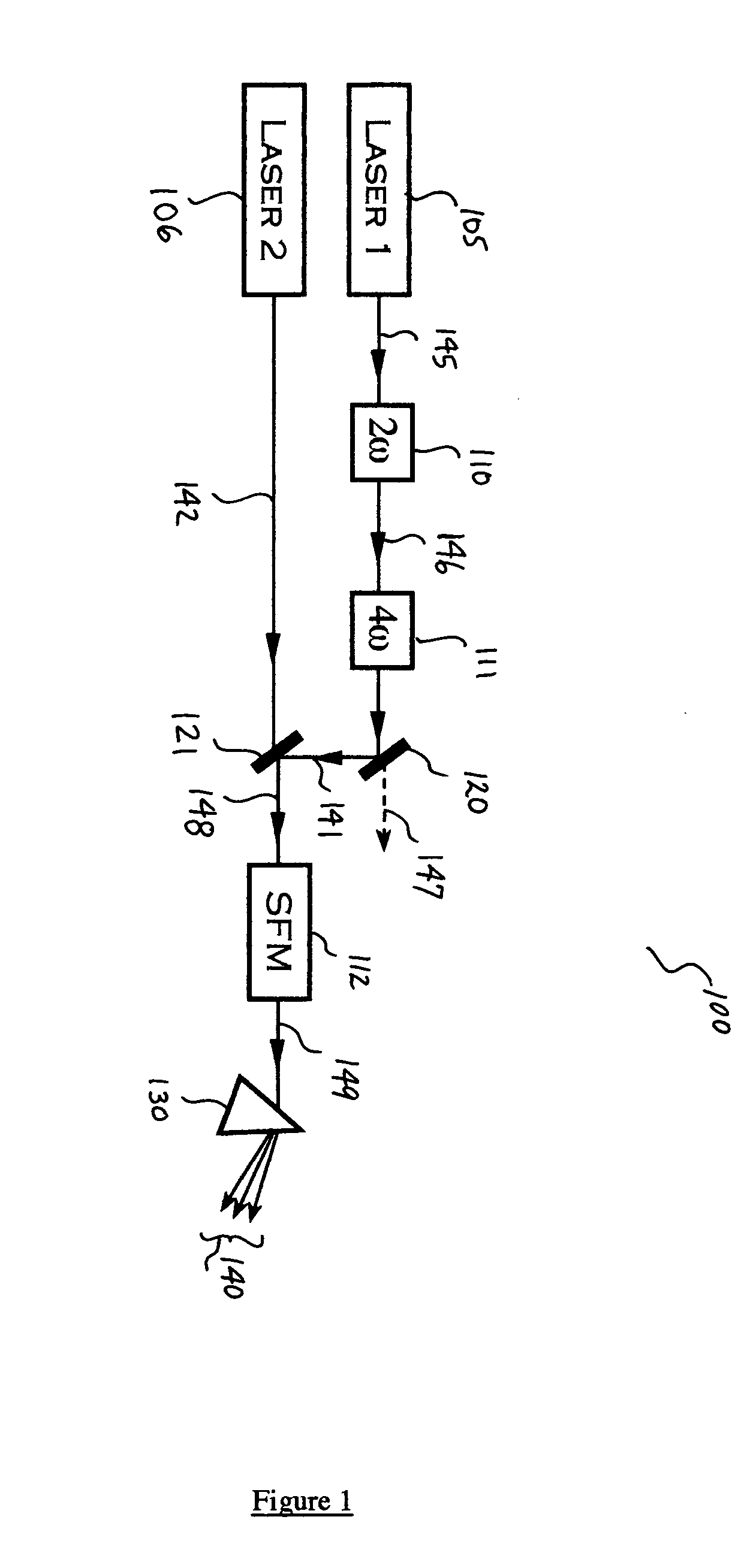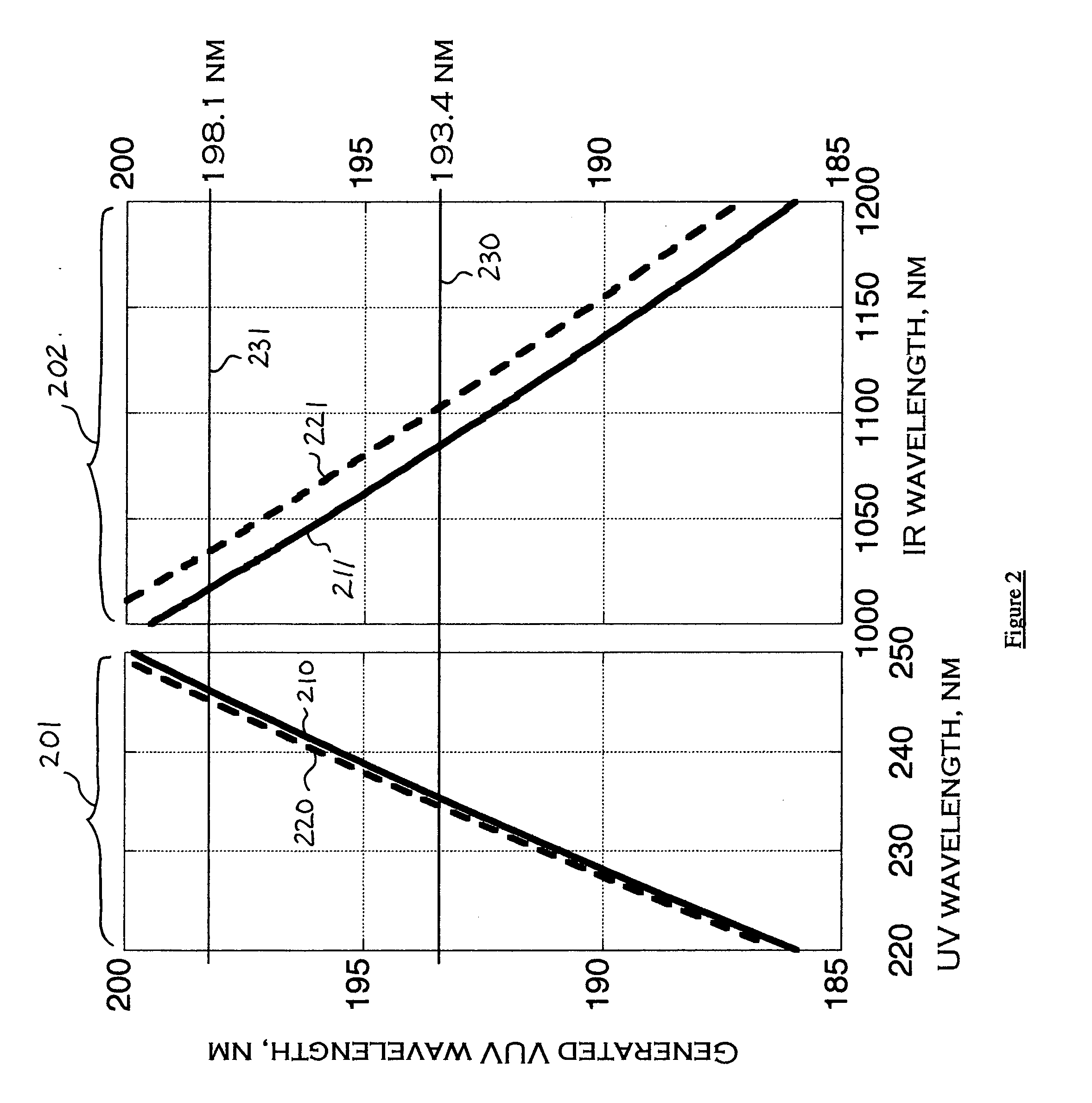Laser architectures for coherent short-wavelength light generation
a laser architecture and short-wavelength light technology, applied in the direction of laser details, active medium materials, active medium shape and construction, etc., can solve the problems of preventing the use of such lamps for more advanced applications, affecting the efficiency of laser beam generation, etc., to achieve high power, high beam quality, and high average vuv power levels
- Summary
- Abstract
- Description
- Claims
- Application Information
AI Technical Summary
Benefits of technology
Problems solved by technology
Method used
Image
Examples
Embodiment Construction
[0018]FIG. 1 is a schematic diagram of a laser architecture 100 according to the present invention. In summary, the frequency harmonics of two fiber laser systems 105, 106 are mixed in a sum-frequency module 112 to produce sub-200-nm coherent laser light. Fundamental beams 145 and 142 may be pulsed or cw, resulting in a pulsed or cw VUV output beam 149. To generate VUV wavelengths, the limited birefringence of CLBO can support only a type-1 phase matching interaction between a long-wave (infra-red) electromagnetic (EM) field with a short-wave (ultraviolet) EM field. This means, in general, that one of the two driving IR fiber lasers must be frequency-quadrupled to the ultraviolet via two successive stages of frequency doubling. Accordingly, fundamental output 145 of laser 105 is first frequency doubled in a first second-harmonic generation (SHG) module 110 to a visible wavelength in the region of 470 nm. The second harmonic light 146 is subsequently frequency doubled in a second SHG...
PUM
 Login to View More
Login to View More Abstract
Description
Claims
Application Information
 Login to View More
Login to View More - R&D
- Intellectual Property
- Life Sciences
- Materials
- Tech Scout
- Unparalleled Data Quality
- Higher Quality Content
- 60% Fewer Hallucinations
Browse by: Latest US Patents, China's latest patents, Technical Efficacy Thesaurus, Application Domain, Technology Topic, Popular Technical Reports.
© 2025 PatSnap. All rights reserved.Legal|Privacy policy|Modern Slavery Act Transparency Statement|Sitemap|About US| Contact US: help@patsnap.com



